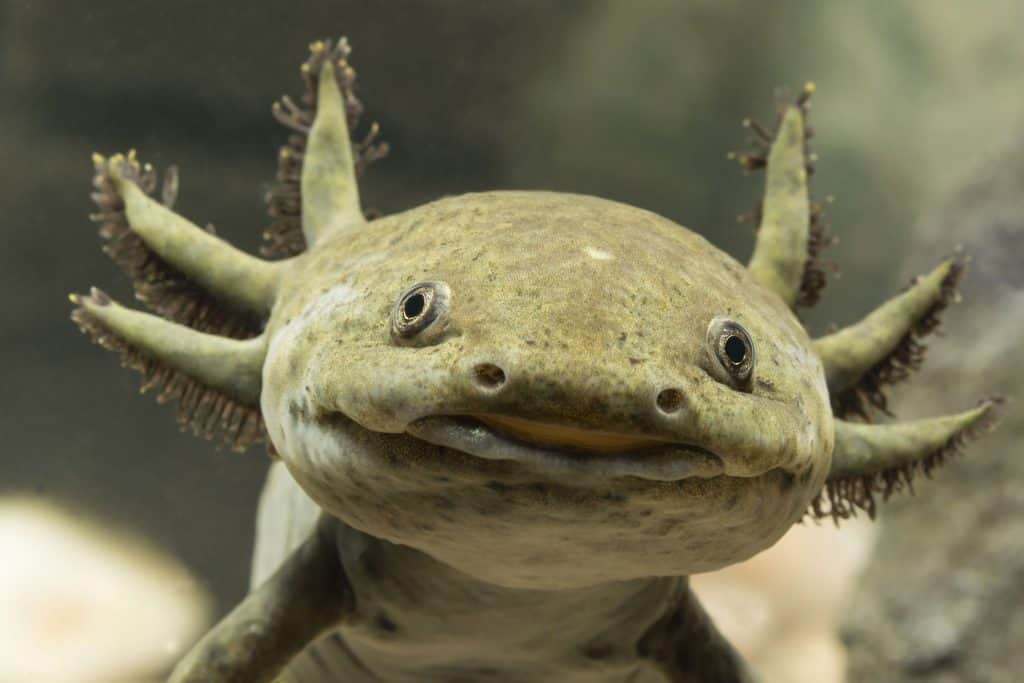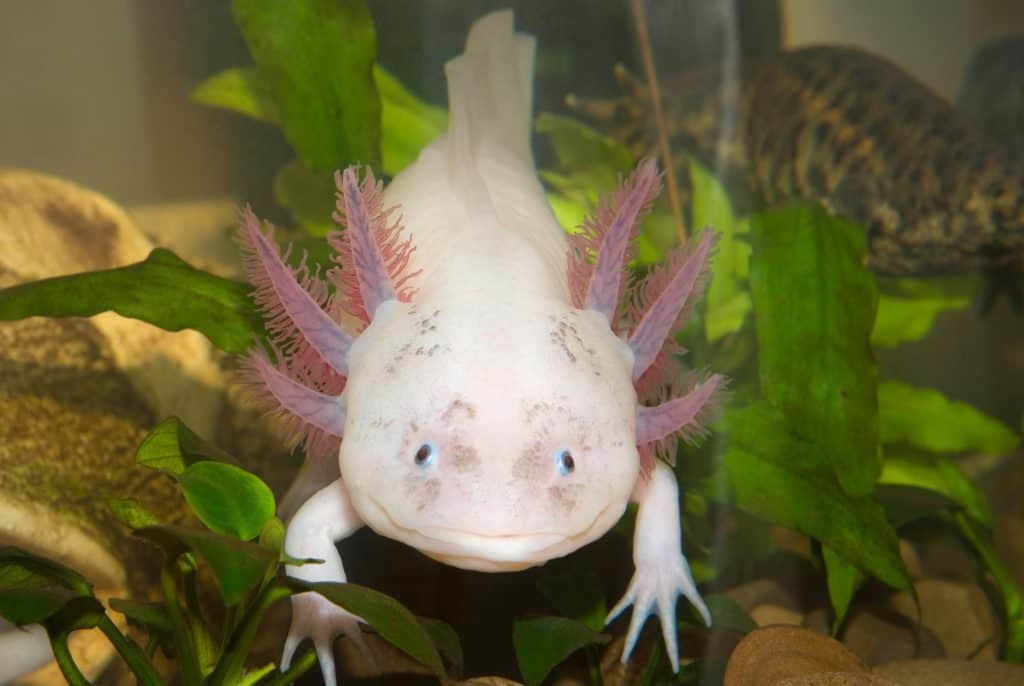Mudkip and Wooper Pokemon Are Based on the Axolotl

If you’re a fan of Pokemon, or if you’ve happened to see one of those mythical creatures, you might notice that some of them bear a striking resemblance to real life creatures. One of these real-life animals is the axolotl.
How are Mudkip and Wooper Pokemon based on the real-life axolotl?
Axolotls are small creatures in real life, about 6-18 inches, and Mudkip and Wooper Pokemon are about this small in the game. Woopers and axolotls have lidless eyes, large tails, and branch-like gills extending from their heads. Mudkips are kind, docile Pokemon, much like the real-life axolotl.
Here’s how these fictional creatures bear resemblance to their real-life counterpart.
Similarities Between Mudkip, Wooper, and the Axolotl
The axolotl is a salamander known as the “Mexican walking fish” that is exclusively native to Lake Xochimilco and Lake Chalco in Mexico. Each Pokemon has a specific typing, and its physique and abilities play a part in determining what type it is.
Wooper and Mudkip are both Water-type Pokemon. Mudkip is known as the “Mud Fish Pokemon.” Its name in Japanese is Mizugorou, with “
Pokemon can both gain experience from fighting and level up, and after they reach a certain level, they can evolve into another Pokemon. The axolotl is neotenic, which means that it develops slowly, and it can reach sexual maturity without metamorphosis.
Axolotls, Mudkips, and Woopers all take some time to mature.
While axolotls don’t evolve, Wooper and Mudkip take a while to mature, as they require higher levels in order to evolve into their next form- Wooper needs to be at level 20 in order to evolve into a Quagsire, and Mudkip needs to reach level 36 in order to evolve into its final evolution, Swampert.
Although axolotls can’t develop the same blue body color that Mudkip and Wooper share, the salamander can still have unusual body colors aside from their normal brown or tan colors: pink, gold, gray, and black.
Axolotls range in size between 6 and 18 inches (15 to 45 cm), making them very small creatures. Mudkip and Wooper are both very small Pokemon, clocking in at only 16 inches (40.5 cm).
Similarities Between Mudkip and Wooper
Let’s begin by comparing Wooper and Mudkip. They are both similar in their body color, blue, although Mudkip’s color is a deeper shade, while Wooper’s is lighter and slightly dulled.
They both have small, beady black eyes and large tails to help them swim through the water, which is helpful for Wooper as it lacks arms. They both have gills on the sides of their faces.
Mudkip and Wooper both like living in wet places- Wooper lives in the water and Mudkip lives in swamps or wetlands. When they sleep, they both bury themselves underneath mud and soil. They are both considered to be very docile Pokemon.
Mudkip and Wooper both have heads that are comparatively larger than their bodies, with Wooper’s head being significantly larger.
Similarities Between Wooper and the Axolotl

Now, let’s compare a Wooper to an axolotl. The name “Wooper” originates from the Japanese nickname for the axolotl, “Wooper looper.”
In comparing pictures side-by-side, one of the most noticeable similarities between a Wooper and an axolotl are the branch-like gills extending out from the side of their heads. They also have similar small, lidless, beady eyes and long, floppy tails.
Axolotls live in cold water, as Lake Xochimilco can get as cold as 6 or 7 degrees Celcius (-13 to -14 degrees Fahrenheit) in the winter. Woopers like to live in cold water most of the time, and they wait until it is cold outside before they come up to land to find food.
Both axolotls and Woopers like cold water.
In the Pokemon world, Woopers are known to be dim-witted creatures who are oblivious to their surroundings. It has a special ability called “Unaware.”
If during a battle, the opponent Pokemon were to do something that raised one of its stats (Attack, Speed, or Defense for example), when they attack a Wooper that has the “Unaware” ability, the Wooper ignores those stat changes and receives damage as if the enemy didn’t boost themselves at all.
This reflects in the nature of axolotls; even though they mature sexually as they age, they still remain in an ‘immature’ state throughout all their lives.
Most salamanders, after developing to a certain age, move out of the water and live on land. Axolotls are different, however. Rather than moving from water to land, they stay in the water their entire lives. Woopers have a preference to live in the water most of their time, coming up to land only for a short time to look for food.
Wooper and Axolotl both have distinct gender features. A male axolotl is identified by their swollen cloacae lined with papillae and female axolotl have wider bodies that are full of eggs.
Wooper’s distinct features are much simpler, and it’s in the branches of gills on their faces: the male Wooper has four branches while female Wooper only has two.
Similarities Between Mudkip and Axolotl
Now, let’s take a look at the similarities between a Mudkip and an axolotl. Physically, a Mudkip could be more similar to an axolotl than a Wooper, as it has front and back limbs, gills that branch out from the sides of its head, and a large tail.
Physically, a Mudkip could be more similar to an axolotl than a Wooper.
Mudkips are known to be kind, docile creatures, sharing the same nature as axolotls.
What’s the Difference Between a Mudpuppy and an Axolotl?
If you’ve been around other Pokemon fans, you might have heard them refer to a Mudkip as a “mudpuppy.” Mudpuppies are amphibians which bear a striking resemblance to an axolotl.
They are also neotenic. At some point, a mudpuppy dons the same branchy gills that an axolotl is well-known for. It can be very easy to mistake one of the other.
So, what is the difference between them?
Mudpuppies can have different-sized gills depending on where they live (larger gills in areas with stagnant water and smaller gills in areas with running water).
The biggest difference lies in their personalities. Mudpuppies are more aggressive, while axolotls are calmer, more docile creatures.
Related Questions
Are there any other Pokemon based on fish or underwater creatures?
There are many Pokemon whose inspiration was drawn from various different species of fish, mammals, and even plants. Here are just a few examples:
- Luvdisc is based off of the Helostoma temminckii, or the kissing gourami.
- Corsola is based off of coral.
- Octillery is based off of octopi.
- Mantyke and Mantine are both based off of manta rays.
I heard that Mudkip is based off of mudskippers, not axolotls?
It’s easy to think that Mudkip is inspired from mudskippers- in fact, their names alone are pretty similar. But Mudkips are indeed based off of Axolotls; though its appearance and nature is
much more similar than a mudskipper.
